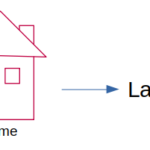Downplay your disposal
Use your kitchen disposal only occasionally; put waste in its proper place.
Why this is important
Nearly every kitchen sink now has a disposal appliance. The name was cleverly chosen (dispose-all), and over the brief course of a few decades, that’s unfortunately how many people have come to use it.
On the receiving end of that appliance are our municipal sewer lines (another massive urban system which will require radical overhaul as we leave the age of petroleum). Our food scraps are mixed with toilet material and become vast amounts of toxic waste.
Meanwhile all the food waste we stuff down that little hole could be a valuable raw material – it could be enriching our soil.
Healthy organic soils, rich with compost, capture carbon emissions (called carbon sequestration) which helps reduce global warming.
It’s time to shift our thinking about what is “waste” and which system we use for discarded materials. Materials we are done with can become part of much bigger solutions.
What you can do
Treat the disposal as it was originally intended: as a machine that clears the drain when something accidentally slides down.
For scraping plates and food waste disposal, seek out and set up alternatives:
A compost pile on your property is ideal. If you can’t have a conventional pile – if you are renting, or live in an apartment or condo – try worm composting (vermicomposting). My sister keeps her worm bin in her kitchen.
Some cities are now offering instructions on how to integrate food waste into your curbside trash pickup.
Other cities are allowing community compost hubs. They’re reforming laws (which used to make it illegal to transport waste to another property) so that food waste can be taken to public compost facilities, for instance at community gardens. Find out what the rules are where you live, and begin to put those scraps into responsible and productive use.

